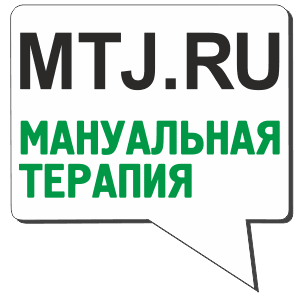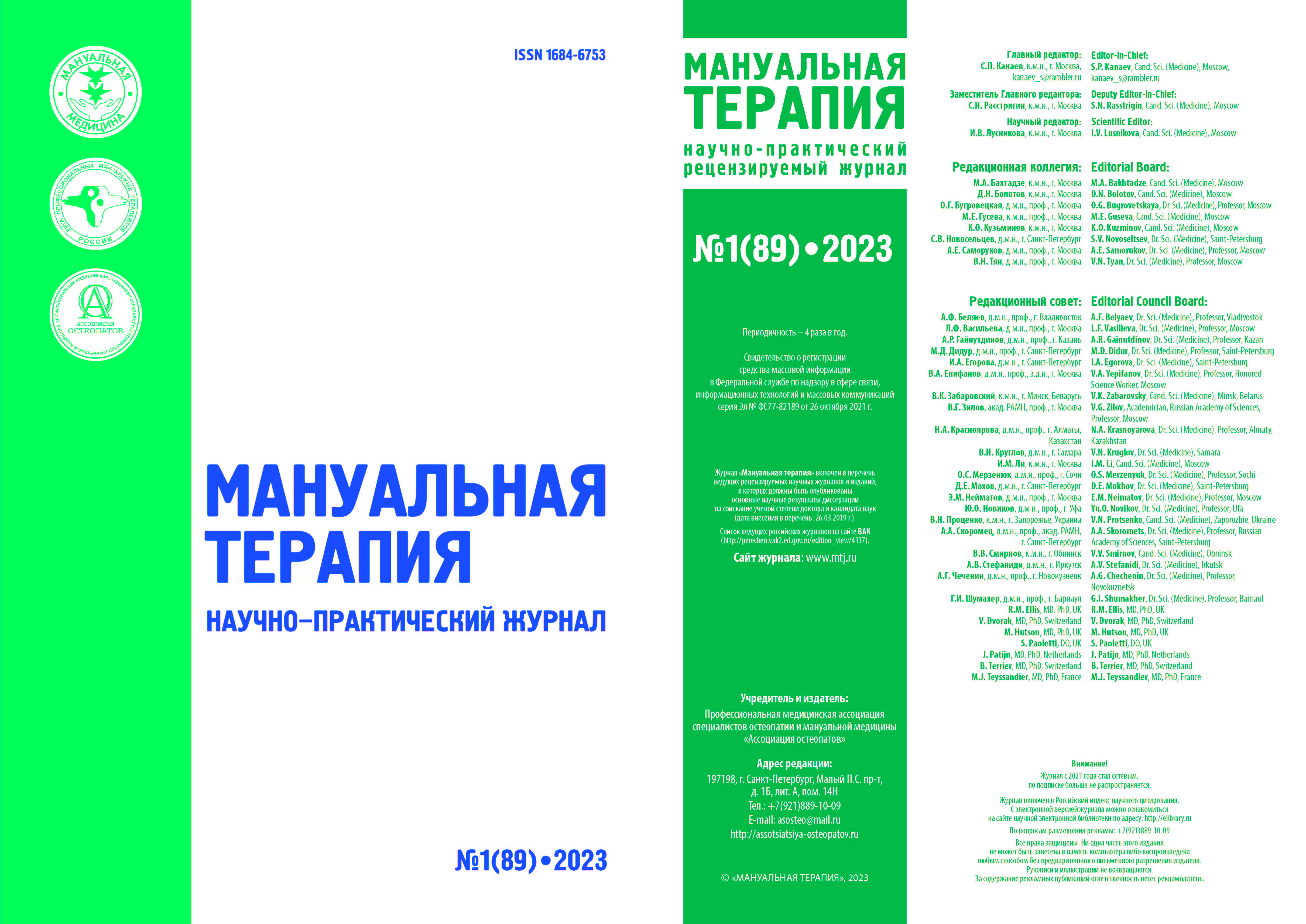An analysis of the clinical and neurological fi ndings showed that the main diff erence between refl ex spondylogenic syndromes and compression syndromes was the presence of prolapse symptoms in the form of signifi cant prevalence of the loss of tendon and periosteal refl exes as well as sensory and motor disorders of the segmental type. Moreover, autonomic-trophic disturbances with lateralization toward the pain syndrome in the form of sympathetic and angiospastic disturbances were defi nitely more frequent (p < 0.05) in refl ex spondylogenic pain syndromes, while in compressive ones, neurodystrophic disturbances prevailed. Lumbar spine pathology was signifi cantly more common in men. The leading risk factors were weight lifting and uncoordinated movement (36% and 11.5%, respectively). Clinical manifestations of compression radicular syndromes were defi nitely more frequent (p < 0.05) in the lumbar spine. At the same time, compression syndromes featured greater severity of clinical manifestations in the form of the predominance of pain, muscle-tonic and statodynamic, autonomic and trophic disorders. The level of radicular compression syndrome corresponds to the level of the pathomorphological substrate. The presence of the pathomorphological substrate may remain clinically insignifi cant for a long time and manifest itself only under certain conditions (venous stasis, edema, aseptic infl ammation).
refl ex spondylogenic syndromes, compression spondylogenic syndromes, lumbar osteochondrosis
1. Belyakov VV, Sitel AB, Kuzminov KO, Nikonov SV. Formation of refl ex and compression syndromes in case of discogenic lumbar spine disease. Zhurnal Nevropatologii i Psikhiatrii = Journal of Neuropathology and Psychiatry. 2000;100(10):18-23. (In Russ.).
2. Belyakov VV, Sharapov IN, Eliseev NP. Spondylogenic lumbar pain syndromes (clinical and instrumental study). Manual Therapy. 2006;2:17-24. (In Russ.).
3. Vein AM, Voznesenskaya TG. Pain syndromes in neurologic practice. Moscow: MEDpress Publishing House; 1999. 372 p. (In Russ.).
4. Zharkov PL. Osteochondrosis and other dystrophic changes of the musculoskeletal system in adults and children. Moscow: Vidar-M Publishing House; 2009. 375 p. (In Russ.).
5. Karlov VA. Pain mechanism in case of radicular compression. Zhurnal Nevrologii i Psikhiatrii = Journal of Neurology and Psychiatry. 1997;3:4-6. (In Russ.).
6. Novoseltsev SV, Malinovsky EL, Smirnov VV. Peculiarities of pathobiomechanical and morphological disturbances in the spine with protrusion and herniated intervertebral discs. Rossiskii Osteopaticheskii Zhurnal = Russian Journal of Osteopathy. 2011;1-2(12-13):26-34. (In Russ.).
7. Novoseltsev SV, Malinovsky EL, Smirnov VV. Clinical and diagnostic comparisons of the results of osteopathic treatment of herniated and protruding intervertebral discs in the lumbar spine. Rossiskii Osteopaticheskii Zhurnal =Russian Journal of Osteopathy. 2011;1-2(12-13):44-51. (In Russ.).
8. Popelyansky AYu. Clinic and pathogenesis of initial manifestations of spondylogenic diseases of the nervous system. In: Spondylogenic and myogenic diseases of the nervous system. Kazan; 1981:6-13. (In Russ.).
9. Seleznev AN. Pain syndrome of the compression-refl ex genesis: development mechanisms and ways of therapeutic action. Zhurnal Nevrologii i Psikhiatrii = Journal of Neurology and Psychiatry. 1997;3:26-31. (In Russ.).
10. Sitel AB. Vascular-compression and radicular syndromes in case of the spine steochondrosis (clinical picture, diagnosis, treatment). Dr. Sci. (Med.) Thesis. Moscow; 1991. 31 p. (In Russ.).
11. Sitel AB, Belyakov VV, Kuzminov KO, Nikonov SV. Formation of refl ex and compression syndromes in case of discogenic lumbar spine disease. Zhurnal Nevropatologii i Psikhiatrii = Journal of Neuropathology and Psychiatry. 2000;100(10):18-23. (In Russ.).
12. Smirnov VV, Savvova MV. X-ray diagnosis of lumbar osteochondrosis. Artifex Publishing House; 2017. 128 p. (In Russ.).
13. Smirnov VV, Malinovsky EL. Clinical, radiological, and functional changes in vertebral motor segments in patients with lumbar osteochondrosis after osteopathic treatment. Proceedings of the Scientifi c and Practical Conference with international participation “Urgent Issues of Osteopathy”. Saint-Petersburg; 1-2 October 2016:42. (In Russ.)
14. Shmyrev VI, Shevelev IN, Vasiliev PP. Clinical and neuroimaging comparisons and complex treatment of compression radiculopathies in case of lumbar osteochondrosis. Nevrologicheskii Zhurnal = Journal of Neurology. 1999;1:21-26. (In Russ.).
15. Boyce RH, Wang JC. Evaluation of neck pain, radiculopathy, and myelopathy: imaging, conservative treatment, and surgical indications. Instr.Course Lect. 2003;52:489-495.
16. Ikeda T, Nakamura T, Kikutchi T, Umeda S, Senda H, Takagi K. Pathomechanism of spontaneous regression of the herniated lumbar disc: histologic and immunohistochemical study. J. Spinal. Disord. 1996;9(2):136-140.
17. Kramer J. Intervertebral Disk Diseases. Causes, Diagnosis, Treatment and Prophylaxis. Georg Thieme Verlag, Stuttgart, 1990:127-140.
18. Maezawa S, Muro T. Pain provocation at lumbar discography as analyzed by computed tomography/discography. Spine. 1992 Nov;17(11):1309-1315.
19. Tsang I. Rheumatology: 12. Pain in the neck. CMAJ. 2001 Apr;17:164(8).
20. Yasuma T, Arai K, Yamauchi Y. The histology of lumbar intervertebral disc herniation. The signifi cance of small blood vessels in the extruded tissue. Spine. 1993 Oct;18(13):1761-1766.








